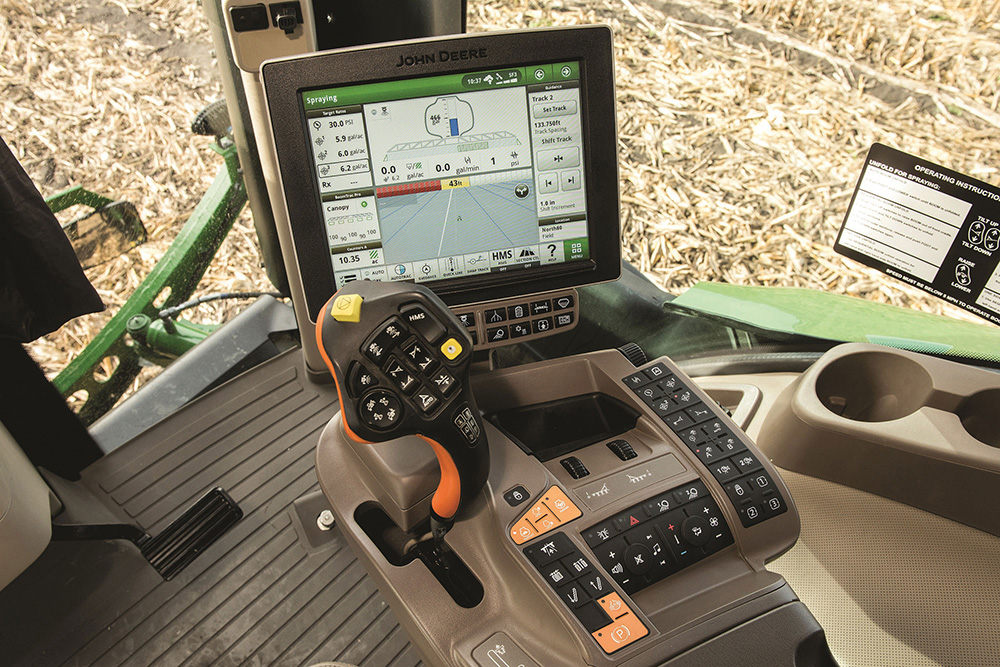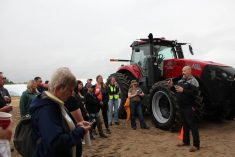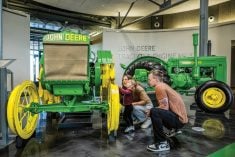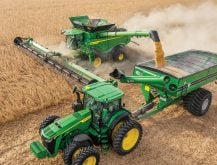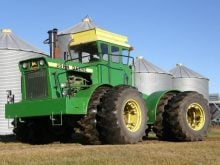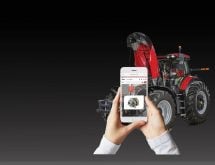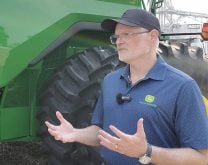As time goes by, the usefulness of the wireless digital technology built into today’s farm machinery is becoming increasingly apparent to producers, according to Ed Olson, senior product lead for JD Link strategy, at John Deere.
“Some of the tools are maturing to the point that the value is pretty obvious,” he said when speaking to ag machinery journalists at the company’s ISG facility in Des Moines, Iowa, in August. “They’re pretty quickly tying into value and money.”
Telematics options are steadily increasing the range of functions and quality of data they provide. And in recent years, the speed at which data is delivered has also improved.
Read Also

Claas brings 1000 Series SP forage harvesters to Canada
In mid-August, Claas unveiled its new line of Jaguar forage harvesters at an event in Visalia, California, deep in the heart of that state’s dairy region.
“In the past we got things (data points) every 30 minutes, because the bandwidth didn’t allow anything more,” Olson continued. “Now we’re getting things every six seconds. Now I get an immediate response from a machine. I don’t have to queue something up. (In the future) the amount of data that will provide to AI or machine learning is going to draw us toward insights we can’t get today. We anticipate the data will continue to grow as we get into this AI space.”
AI (artificial intelligence) is set to become a key component in many of the high-tech products John Deere is offering on equipment. By monitoring system functions closely, machines are beginning to have the ability to very accurately predict pending machine component failures before they result in breakdowns in the field. AI and machine learning abilities will continue to improve that aspect even further.
But there is an even more basic element to advantages from telematics, especially for large producers, noted Olson. And at Deere, dealers are part of the equation, with their ability to take on the role of monitoring machines for trouble codes and pending failures for any customer that authorizes them to, allowing local service departments to see trouble codes as they come up.
That helps producers deal with a common problem: inexperienced on-farm labourers.
“This is true in construction and forestry as well as ag, the operators typically— I don’t want to be too general — but many of them (hired operators) just don’t care,” explained Olson. “They’re doing their job for eight or 10 hours, whatever it is, then they go home. It’s somebody else’s machine. They’re not very well versed in what some alerts might mean. A red alert, does that mean I should stop or should I just keep going? Am I going to get in trouble for stopping? So dealers have really taken that role for the customers that have more than one machine to monitor. Frankly that’s the role of all of these products. Provide the data to someone that can do something with it to keep these machines up and running and take the burden away from the farmers.”
Deere’s JD Link offering also allows owners to look at machine usage in conjunction with agronomic field maps to see if equipment features are providing a payback.
“They can start to tie those things together with actual productivity in the field, where I can see, for instance, where I’ve used AutoTrac and how my seed population is emerging,” says Olson. “They [farmers] can start to tie together the way the machine technology is being used along with the agronomic outputs they’re expecting.”
“Those technologies are what are going to help farmers do more with less,” said John Stone, senior vice president of John Deere’s Intelligent Solutions Group, at the same event in Des Moines. “John Deere’s strategy is to be the world’s leader in precision agriculture.”
“I was visiting some farmers in North Dakota last week. And they described it to me as in the past 10 years we’ve gone from having equipment operators on our farm to now we just have drivers, because the skill level of people they can find is reduced. That means our equipment has to become smarter. It has to become more automated. It has to take that very low-skilled operator and make him perform as if he was a 20-year expert at operating that machine.
“The climate is changing. The available window to get your seeds in the ground no matter how big your farm is can be as short as six or seven days. So we need to be able to go faster but keep the level of precision.”
According to Olson, Deere will continue expanding its line of digital products, including widening the range of JD Link offerings and compatible machines.
“That spectrum of (telematics compatible) machines we cover is continuing to grow,” he said. “You’re going to see the same progression on the ag side in the 5 and 4 Series tractors, etc. So the progression of connected machines continues to grow.
“In fact it’s our desire to offer it on older machines and even from competitive environments. Most farmers run a multi-coloured fleet. We want to support that as well.”


